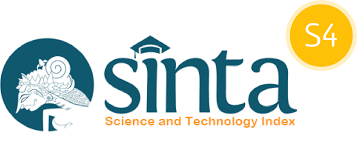Unveiling the Potential of Local Outlier Factor in Credit Card Fraud Detection
Keywords:
Local Outlier Factor (LOF), Credit Card Fraud Detection, Unsupervised Learning, Anomaly Detection, Imbalanced DatasetsAbstract
This study evaluates the Local Outlier Factor (LOF) algorithm for credit card fraud detection, emphasizing its effectiveness with imbalanced datasets. Unlike traditional methods that struggle with the rarity and variability of fraudulent transactions, LOF uses local density deviations to identify anomalies. Through a rigorous methodology involving data preprocessing, parameter tuning, and comparison with other machine learning algorithms, LOF demonstrated a high recall rate and a balanced precision-recall trade-off, excelling at detecting subtle, localized fraud. Challenges like threshold setting and false positives were noted, with future research suggested on real-time system integration, algorithm combination, and advanced feature engineering. The study underscores LOF's strengths and limitations, contributing to enhanced fraud detection strategies
References
Aha, D. W., Kibler, D., & Albert, M. K. (1991). Instance-based learning algorithms. Machine learning, 6, 37-66.
Aleskerov, E., Freisleben, B., & Rao, B. (1997, March). Cardwatch: A neural network based database mining system for credit card fraud detection. In Proceedings of the IEEE/IAFE 1997 computational intelligence for financial engineering (CIFEr) (pp. 220-226). IEEE.
Bahnsen, A. C., Aouada, D., Stojanovic, A., & Ottersten, B. (2016). Feature engineering strategies for credit card fraud detection. Expert Systems with Applications, 51, 134-142.
Bahnsen, A. C., Aouada, D., Stojanovic, A., & Ottersten, B. (2016). Feature engineering strategies for credit card fraud detection. Expert Systems with Applications, 51, 134-142.
Bhatla, T. P., Prabhu, V., & Dua, A. (2003). Understanding credit card frauds. Cards business review, 1(6), 1-15.
Bhattacharyya, S., Jha, S., Tharakunnel, K., & Westland, J. C. (2011). Data mining for credit card fraud: A comparative study. Decision support systems, 50(3), 602-613.
Bohara, M. H., Patel, K., Saiyed, A., & Ganatra, A. (2021). Adversarial artificial intelligence assistance for secure 5G-enabled IoT. Blockchain for 5G-Enabled IoT: The new wave for Industrial Automation, 323-350.
Bolton, R. J., & Hand, D. J. (2001). Unsupervised profiling methods for fraud detection. Credit scoring and credit control VII, 235-255.
Bolton, R. J., & Hand, D. J. (2002). Statistical fraud detection: A review. Statistical science, 17(3), 235-255.
Breunig, M. M., Kriegel, H. P., Ng, R. T., & Sander, J. (2000, May). LOF: identifying density-based local outliers. In Proceedings of the 2000 ACM SIGMOD international conference on Management of data (pp. 93-104).
Breunig, M. M., Kriegel, H. P., Ng, R. T., & Sander, J. (2000, May). LOF: identifying density-based local outliers. In Proceedings of the 2000 ACM SIGMOD international conference on Management of data (pp. 93-104).
Chen, J. I. Z., & Lai, K. L. (2021). Deep convolution neural network model for credit-card fraud detection and alert. Journal of Artificial Intelligence, 3(02), 101-112.
Dal Pozzolo, A., Caelen, O., Le Borgne, Y. A., Waterschoot, S., & Bontempi, G. (2014). Learned lessons in credit card fraud detection from a practitioner perspective. Expert systems with applications, 41(10), 4915-4928.
García, S., Luengo, J., & Herrera, F. (2015). Data preprocessing in data mining (Vol. 72, pp. 59-139). Cham, Switzerland: Springer International Publishing.
Ghosh, S., & Reilly, D. L. (1994, January). Credit card fraud detection with a neural-network. In System Sciences, 1994. Proceedings of the Twenty-Seventh Hawaii International Conference on (Vol. 3, pp. 621-630). IEEE.
Goldstein, M., & Uchida, S. (2016). A comparative evaluation of unsupervised anomaly detection algorithms for multivariate data. PloS one, 11(4), e0152173.
Haoxiang, W., & Smys, S. (2021). A survey on digital fraud risk control management by automatic case management system. Journal of Electrical Engineering and Automation, 3(1), 1-14.
Haoxiang, W., & Smys, S. (2021). Big data analysis and perturbation using data mining algorithm. Journal of Soft Computing Paradigm (JSCP), 3(01), 19-28.
Phua, C., Lee, V., Smith, K., & Gayler, R. (2010). A comprehensive survey of data mining-based fraud detection research. arXiv preprint arXiv:1009.6119.
Pun, J. K. F. (2011). Improving credit card fraud detection using a meta-learning strategy. University of Toronto.
Stolfo, S. J., Fan, W., Lee, W., Prodromidis, A., & Chan, P. K. (2000, January). Cost-based modeling for fraud and intrusion detection: Results from the JAM project. In Proceedings DARPA Information Survivability Conference and Exposition. DISCEX'00 (Vol. 2, pp. 130-144). IEEE.
Stolfo, S., Fan, D. W., Lee, W., Prodromidis, A., & Chan, P. (1997, July). Credit card fraud detection using meta-learning: Issues and initial results. In AAAI-97 Workshop on Fraud Detection and Risk Management (Vol. 83).
Syeda, M., Zhang, Y. Q., & Pan, Y. (2002, May). Parallel granular neural networks for fast credit card fraud detection. In 2002 IEEE World Congress on Computational Intelligence. 2002 IEEE International Conference on Fuzzy Systems. FUZZ-IEEE'02. Proceedings (Cat. No. 02CH37291) (Vol. 1, pp. 572-577). IEEE.
Tripathi, M. (2021). Sentiment analysis of nepali covid19 tweets using nb svm and lstm. Journal of Artificial Intelligence, 3(03), 151-168.

















